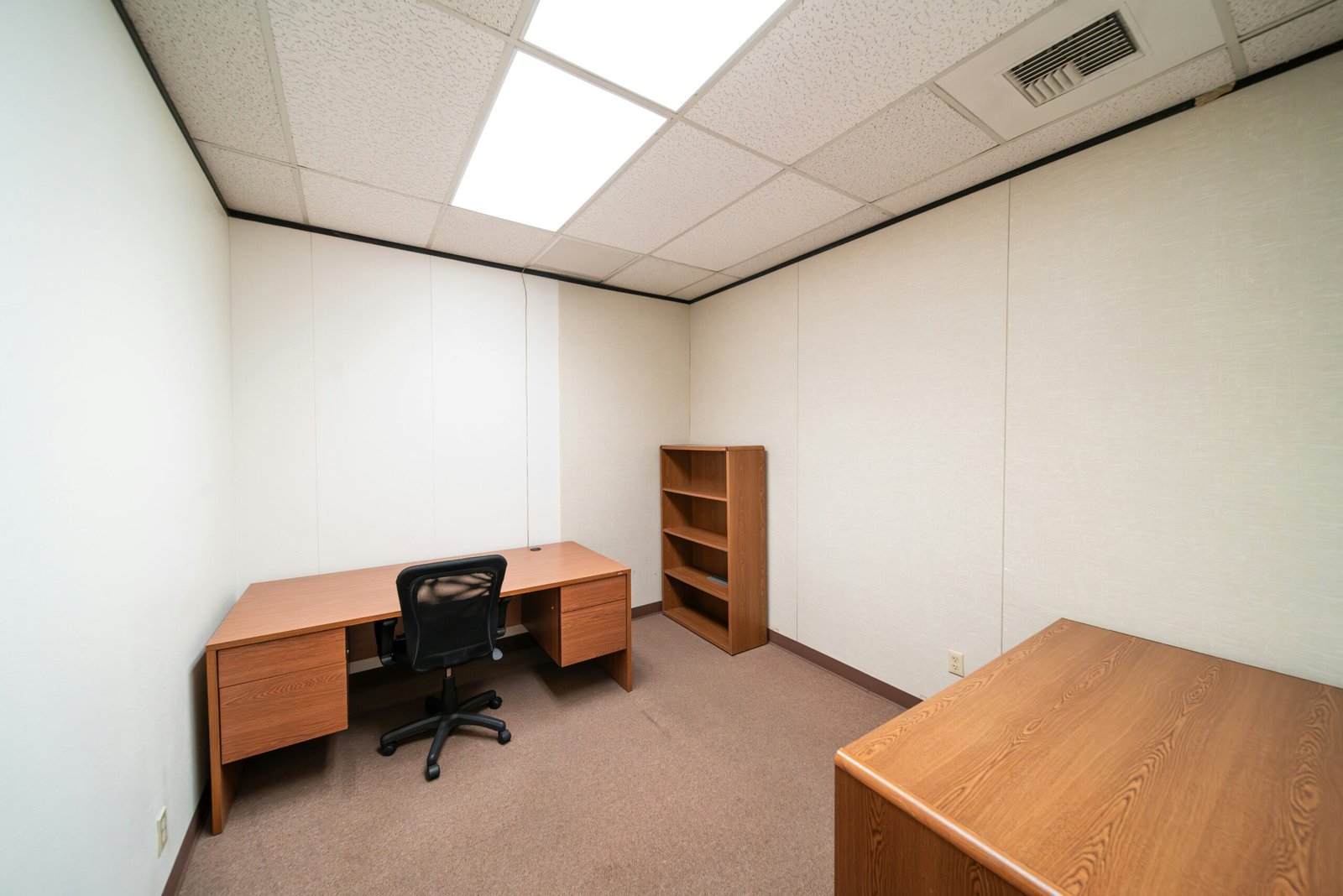Understanding Vastu Shastra
Vastu Shastra is an ancient Indian science that focuses on architecture and spatial arrangement, integrating principles to create harmonious living conditions. Rooted in the Vedic texts, this system dates back thousands of years and has consistently influenced the way homes and buildings are constructed in India. The fundamental aim of Vastu Shastra is to promote prosperity, health, and well-being through thoughtful consideration of the directions and energies prevalent in a space.
The core principles of Vastu Shastra revolve around the five elements: earth, water, fire, air, and space. Each element corresponds to a specific direction, and when effectively harnessed, they contribute to a balanced environment. For instance, the earth element, associated with the southwest direction, represents stability and grounding. Conversely, water, linked to the northeast, promotes prosperity and tranquility. Recognizing how these elements interact can help individuals design personal and communal spaces that support positive energy flow.
In traditional Vastu, every direction has a unique significance and influence on the occupant’s physical and mental state. The sun’s path, planetary forces, and other celestial factors are considered when assessing how a space aligns with Vastu principles. This deeply intuitive approach emphasizes the importance of orientation — that is, how a house is positioned concerning the cardinal directions. Proper alignment with directions can mitigate negative energies and foster an environment ripe for growth and fulfillment.
The historical significance of Vastu Shastra further extends to its applications in temples and public spaces, where the structural integrity and orientation have been meticulously planned to enhance collective well-being. It is in understanding these principles that modern architects and homeowners can harness Vastu Shastra to enhance their quality of life, creating spaces that resonate with harmony, peace, and prosperity.
The Role of Directions in Vastu
In Vastu Shastra, the ancient Indian architectural science, direction plays a pivotal role in determining the harmony and energy flow within a space. The four cardinal directions—North, East, South, and West—each possess unique characteristics and energies that significantly influence various aspects of life. Understanding these directions is essential for creating a balanced environment conducive to well-being and prosperity.
To begin with, North is associated with wealth and prosperity. This direction is linked to the element of water, symbolizing abundance and the flow of life. In Vastu, having significant water features or ensuring that the North section of a property is unobstructed can invite positive financial growth and opportunities. Incorporating elements that resonate with this direction, such as mirrors and aquariums, further enhances the beneficial energies.
East direction, on the other hand, is related to health and new beginnings. It is associated with the rising sun, representing illumination and enlightenment. Incorporating natural light in this area is crucial, as it fosters positivity and vitality. Structures built in this direction are believed to enhance overall well-being and support personal development. Installing windows or openings that allow sunlight to enter the living space is a practice often encouraged in Vastu.
South, conversely, represents stability and strength, being connected with the element of fire. It is regarded as a direction that influences both personal power and authority. Vastu principles suggest allocating heavier objects, such as furniture, in this section to provide a sense of grounding and stability in one’s life. Careful placement of attributes linked to fire is essential in harnessing the strong energies found within this direction.
Lastly, the West direction embodies creativity and relationships, linked to the element of earth. A well-balanced West side may boost interpersonal connections and foster harmonious relationships. Designers and architects often recommend placing social areas, such as living rooms, in this direction, allowing for the nurturing of bonds and camaraderie.
By understanding the significance of these cardinal directions in Vastu, individuals can align their spaces effectively to promote prosperity, health, and strong relationships. This alignment allows for a holistic approach to living harmoniously within one’s surroundings.
❤️ Powerful Real Love Spells That Work
Attract true love, reunite with your partner, and strengthen relationships with proven magic spells.
Creating a Vastu-Compliant Layout
Establishing a Vastu-compliant layout is essential for enhancing the positive energy flow within a space, whether it is a home or workplace. To begin with, the main entrance plays a critical role in Vastu principles, as it is considered the gateway for energy entering the building. Ideally, the main entrance should be located in the north or east direction, as these orientations are believed to bring in auspicious energy. It is advisable to keep the entrance area clean and well-lit, promoting a welcoming atmosphere that encourages positive vibrations.
When considering the arrangement of rooms within a structure, adhering to specific directional guidelines can yield beneficial results. For instance, the living room is best positioned in the northeast, which facilitates warmth and comfort for gathering. The kitchen, a space of nourishment, should ideally be located in the southeast quadrant, aligning with the element of fire. Conversely, bedrooms should be situated in the southwest to promote stability and security; this placement also aids in enhancing relationship dynamics.
Attention should also be given to furniture layout to ensure harmonious energy circulation. Heavy furniture, such as wardrobes and beds, should be placed in the southern and western sections of rooms, while lighter items like chairs and tables can be arranged in the north and east. This strategic distribution helps maintain a balance between various energies within the space. Additionally, mirrors should be placed thoughtfully; reflecting positive energy while avoiding any configurations that may create disorientation or unrest.
By conscientiously designing the layout of a home or workplace in line with Vastu principles, individuals can cultivate an environment that fosters health, prosperity, and tranquility. Implementing these guidelines can lead to a more harmonious living or working experience, maximizing the inherent benefits of Vastu compliance.
The Benefits of Directional Alignment
The practice of aligning spaces according to Vastu principles offers a myriad of benefits that can significantly impact individuals’ lives. One of the primary advantages is the enhancement of mental clarity. By strategically positioning areas in accordance with the cardinal directions, individuals often experience reduced distractions and greater focus. For instance, a home office aligned to the east can promote creativity and productivity, making it an ideal location for tasks requiring concentration.
Furthermore, improved health is another significant benefit of directional alignment. According to Vastu Shastra, specific directions are believed to influence physical well-being. For example, sleeping with the head towards the south can lead to restful sleep and rejuvenation, while improper alignment may result in disturbed sleep patterns. Numerous individuals have reported positive health changes after implementing Vastu guidelines, indicating a strong connection between space orientation and personal wellness.
Enhancement of relationships is an equally important benefit associated with Vastu-compliant spaces. The southwest direction is often recommended for the master bedroom, promoting harmony among partners. Many couples who have organized their living spaces according to these principles cite improved communication and less conflict. This illustrates the profound impact that spatial arrangement can have on personal dynamics.
Finally, increased financial prosperity is an often-cited advantage of correct directional alignment. Aligning spaces related to wealth, such as shops or home offices, in the north can draw abundance. Many entrepreneurs have experienced a rise in business opportunities after adhering to Vastu recommendations, underscoring the potential economic benefits of this ancient architectural science.
Overall, the benefits of aligning spaces in accordance with Vastu principles encompass mental clarity, health, relationships, and financial stability, making it a worthwhile consideration for individuals seeking a balanced and prosperous life.
Common Vastu Mistakes to Avoid
When it comes to Vastu Shastra, a traditional Indian architectural science, many individuals inadvertently make mistakes that can compromise the energy balance and harmony of their spaces. One common pitfall is neglecting the importance of directional alignment. Each room and object within a home or office serves a specific purpose based on its orientation, and disregarding these guidelines can lead to imbalances that negatively affect inhabitants’ well-being.
For instance, placing the kitchen in the northeast direction is a prevalent error. According to Vastu principles, the ideal location for the kitchen is in the southeast, as this aligns with the element of fire, promoting health and prosperity. Failing to recognize this can lead to increased stress and disharmony within the household. Additionally, the position of the entrance is crucial; the main entrance should ideally face north or east to welcome positive energy into the space.
Another mistake involves furniture placement. Overcrowding a room with heavy furniture can block the flow of energy, making it difficult for inhabitants to experience tranquility. Open spaces promote better circulation of energy, so it is advisable to maintain a minimalist approach while ensuring that essential items are positioned according to their Vastu recommendations. Moreover, people often overlook the importance of maintaining cleanliness and orderliness in the home, which can significantly impact the energetic flow. Cluttered spaces hinder positive energy from circulating freely, leading to stagnation and imbalance.
Lastly, disregarding the influence of natural elements, such as sunlight and airflow, can lead to an uninviting atmosphere. Ensuring proper ventilation and allowing natural light to flow into the space contributes to a vibrant and harmonious environment. By being aware of these common Vastu mistakes and making mindful adjustments, one can create a balanced living or working space that promotes well-being and positive energy flow.
Tools and Techniques for Vastu Alignment
Understanding the principles of Vastu Shastra is crucial for creating harmonious environments. One of the primary tools used in Vastu alignment is the Vastu compass, also known as a Vastu shastra compass. This specialized compass assists practitioners in determining the cardinal directions related to their property. The application of a Vastu compass not only aids in identifying ideal placements and orientations but also ensures that the flow of energy within a space is optimized. By using this compass, individuals can ascertain the best directions for various rooms and essential elements of their homes or workplaces.
In addition to the Vastu compass, Vastu charts play a significant role in alignment processes. These charts provide essential diagrams that illustrate the ideal placements of rooms, furniture, and entrances. Each chart is specifically drawn considering the energetic significance of directions and elements. Utilizing these charts allows for a visual representation of how best to arrange a space according to Vastu principles. To maximize effectiveness, it is advisable to keep these charts readily accessible during the design and arrangement stages of any space.
Another crucial aspect of Vastu alignment involves the incorporation of design elements that resonate with Vastu principles. This may include the strategic placement of water bodies, gardens, and colors. For instance, water features should ideally be placed in the northeast, promoting positive energy flow. Likewise, the use of colors corresponding to the eight directions can enhance the ambience and align the energy within the space. While personal taste is important in design, aligning these choices with Vastu principles can lead to a lifted and enriched experience in any dwelling or workspace.
Ultimately, effectively utilizing these tools and techniques not only enhances Vastu alignment but also contributes significantly to the overall well-being of those inhabiting the space.
Consulting with a Vastu Expert
Consulting with a Vastu expert is a crucial step for anyone seeking to harmonize their living or working space according to Vastu Shastra principles. These professionals possess in-depth knowledge of the ancient Indian science that governs the directional alignment of buildings and spaces, ensuring that design promotes positive energy flow. When searching for a qualified Vastu consultant, several factors should be taken into consideration.
Firstly, verify the consultant’s credentials and experience. A reputable Vastu expert should have formal training and a proven track record of successfully assisting clients in aligning their environments. Look for professionals who provide testimonials and evidence of their work, offering insights into the effectiveness of their consultations. Additionally, it may be beneficial to review their approach; different experts may have varying methodologies. Choose one whose philosophy resonates with your own beliefs and lifestyle.
The typical consultation process begins with an assessment of your space. The expert will often conduct an on-site visit to examine building orientation, room placement, and design elements. During this phase, they may also inquire about your specific goals, whether it be to enhance prosperity, health, or relationships. Based on their analysis, the Vastu consultant will provide tailored recommendations, which could involve structural changes, color adjustments, or the strategic placement of decor to promote balance and positive energy.
Expert insights can be invaluable when striving to create an optimally aligned environment. By incorporating the suggestions made by a Vastu expert, one can significantly enhance the vibrational qualities of a space. This alignment not only promotes personal well-being but can also improve overall quality of life. Hence, consulting with a Vastu professional is a wise investment for anyone seeking a harmonious living or working environment.
Adapting Vastu Principles to Modern Living
The evolving landscape of modern architecture and interior design has necessitated the adaptation of traditional Vastu principles to align with contemporary lifestyles. While the foundational concepts of Vastu Shastra provide invaluable guidelines for creating harmonious living environments, integrating these principles into modern spaces does not require strict adherence to past methodologies. Instead, individuals can embrace a more flexible approach that resonates with current aesthetic and functional needs.
In contemporary settings, open floor plans and minimalism frequently dominate design trends. This can be harmonized with Vastu by maintaining the essential elements of energy flow and spatial orientation. For instance, the placement of rooms such as living areas, bedrooms, and kitchens can be adjusted within an open layout while ensuring alignment with cardinal directions. It is beneficial to designate specific zones for different activities that reflect the flow of energy, promoting both practicality and tranquility in the home environment.
Furthermore, the use of natural materials and colors in interior design can harmonize modern aesthetics with Vastu principles. Incorporating materials like wood, stone, and clay not only enhances aesthetics but also resonates with Vastu’s emphasis on nature. Similarly, choosing color schemes that reflect the elemental qualities—like earthy tones for stability and vibrant hues for creativity—can enhance the overall atmosphere within the space.
Technology also plays a significant role in modern living. Smart homes, with their various electronic systems, can integrate Vastu principles through careful planning in the placement of devices and fixtures. For instance, ensuring that electronic devices are not situated in the negative energy zones as outlined in Vastu can help maintain a balanced environment.
Ultimately, adapting Vastu principles to align with modern living requires a thoughtful combination of tradition and innovation. By effectively merging these two aspects, individuals can create spaces that are both aesthetically pleasing and energetically harmonious.
Conclusion: The Path to a Harmonious Space
In the realm of Vastu Shastra, the significance of direction cannot be overstated. This ancient Indian architectural science emphasizes the alignment of spaces with cardinal directions to promote well-being, prosperity, and harmony. Throughout this discussion, we have explored how the orientation of various rooms and objects within a space influences energy flow, ultimately impacting the occupants’ physical and emotional health.
Key principles include placing the main entrance in a favorable direction, aligning sleeping areas to improve rest and rejuvenation, and designing living spaces that foster positive interactions. Each directional zone corresponds to specific elements and aspects of life; for instance, the northeast is linked to spirituality and clarity, while the southwest is associated with stability and strength. By understanding these connections, individuals can create environments that enhance their lives and support their aspirations.
Moreover, it is essential to recognize that Vastu is not merely about aesthetics but about cultivating a balanced atmosphere conducive to growth, peace, and contentment. When one integrates these ancient principles with modern living, it can lead to transformative experiences. Those who embrace Vastu often report improved relationships, increased financial prosperity, and an overall sense of serenity in their lives.
As you reflect on the insights shared, consider examining your own living or working space. Are there elements that may benefit from a Vastu-informed approach? Implementing even small changes, such as rearranging furniture or adjusting colors, can significantly enhance harmony in your environment. We encourage you to delve into the principles of Vastu further, fostering a nurturing space that aligns with your life’s goals and aspirations.








